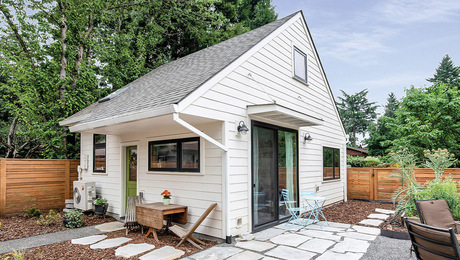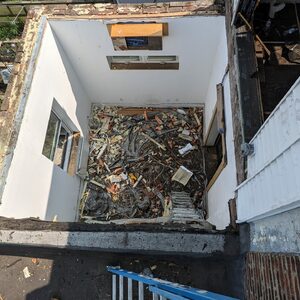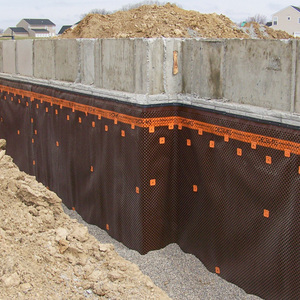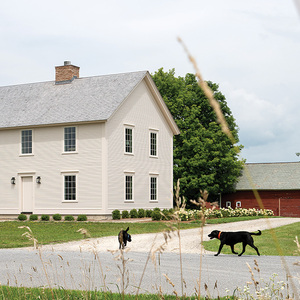After a camera was inserted into our septic line, we were told we have roots in the line. That is cause of the toilets backing up. Repair is around 1K. We have been told by a plumber’s helper that there is a product that can be poured into the toilets (or was it directly into the clean out valve?) that might clean out the roots. He could not recall the name of the product. Does anyone know? Has anyone had experience w/ it ? Successful or not? Thanks.
Discussion Forum
Discussion Forum
Up Next
Video Shorts
Featured Story

Key proposals for the next edition of the International Residential Code tackle room sizes, stair specs, emergency egress, and deck guards, among other requirements.
Featured Video
Builder’s Advocate: An Interview With ViewrailHighlights
"I have learned so much thanks to the searchable articles on the FHB website. I can confidently say that I expect to be a life-long subscriber." - M.K.
Fine Homebuilding Magazine
- Home Group
- Antique Trader
- Arts & Crafts Homes
- Bank Note Reporter
- Cabin Life
- Cuisine at Home
- Fine Gardening
- Fine Woodworking
- Green Building Advisor
- Garden Gate
- Horticulture
- Keep Craft Alive
- Log Home Living
- Military Trader/Vehicles
- Numismatic News
- Numismaster
- Old Cars Weekly
- Old House Journal
- Period Homes
- Popular Woodworking
- Script
- ShopNotes
- Sports Collectors Digest
- Threads
- Timber Home Living
- Traditional Building
- Woodsmith
- World Coin News
- Writer's Digest


















Replies
You didn't say what kind of pipe it is or what is the length. Chances are that you have clay pipe. With clay pipe roots can and will find their way into the joints. After all trees like water and nutients. So cutting the roots out with a snake will work for a while but they will grow back. Also as they grow through a crack in the pipe they can break it open and make it bigger. You could have a fair amount of damge down there.
The best way to end this is to replace it with PVC. I know it costs more up front but if you have old clay pipes they do eventually need replacing.
I did it myself on our first house. Just get a shovel and some other tools and start digging. You can get a tan and impress the ladies around the place with copious amounts of sweat.
I had an in-depth conversation with someone recently about a similar problem. Their solution was to pull a new plastic pipe inside the old clay pipe. I need to remember who it was. They have to expose both ends of the pipe, insert a pull cable and nose piece, and pull from the city end. the nose cone crushes the clay pipe and makes a hole in the dirt large enough for the new plastic pipe that is attached to the back of the nose cone.
"Put your creed in your deed." Emerson
"When asked if you can do something, tell'em "Why certainly I can", then get busy and find a way to do it." T. Roosevelt
Trenchless sewer replacement, pipe splitting, pipe bursting.... a great way to go. In neighborhoods with lots of clay sewer laterials you can always find someone replacing one.
I tyracked down the person who told me the story about pulling in a new plastic pipe. He is an architect we do business with, just had it done to his house about 2 weeks ago. He went to the beach for 3-4 days while the work was being done. The did 90 lf of new pipe for $7,000 in central Va."Put your creed in your deed." Emerson
"When asked if you can do something, tell'em "Why certainly I can", then get busy and find a way to do it." T. Roosevelt
Any opinions on the epoxy sleeve/insert method of "replacing" a sewer line? Rather than the pipe bursting process where a new pipe is pulled through the old, a new sleeves is insert from one end that is impregnated with an epoxy compound and then inflated lining the old pipe. Benefit is you only need access from one end of the old line.The city did it for the main line running behind the house and in the neighborhood. I've also seen videos of the process for residential. I'm contemplating this process as the invert for my sewer line at the main is literally 15' down from the surface and it running along the back lot line under patios and fences. I know this since the neighbor worked on his line and checking the invert from the manhole in the street.Diane
I don't have any experience with that process, but when I had to do some sewer replacement I was able to talk to one of the city public works inspectors who was involved in all of the municipal replacement work (lots needed where I lived, miles of it). She was able to run down the various methods they used, which I found helpful. You might be able to chase down someone in your town to talk to.
I think the key word the OP used was "septic". This would indicate a lateral field stoppage, not just a sewer main line.
Could be wrong, but the nomenclature needs to be clarified. 1K seems very reasonable for a field replacement or main sewer replacement, if it is deep, in either case.
Dave
I think what you are looking for is called copper sulfate(sp). I used it once and it not only killed the roots, it killed every cottonwoon for 50' either side of the waste line.
First try to find a sewer cleaning guy who is willing to actually work hard.
Second: copper sulfate dripped into the system over time will keep new roots from growing.
With my mouth I will give great thanks to the Lord; I will praise Him in the midst of the throng. For He stands at the right hand of the needy, to save them from those who would condemn them to death.
- Psalms 109:30-31